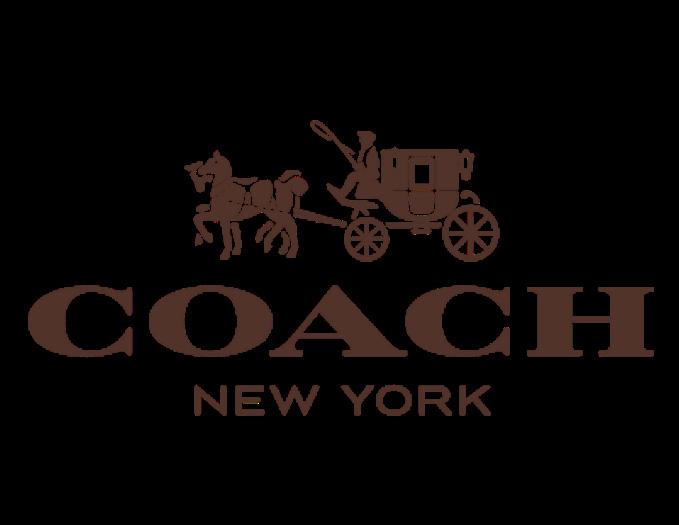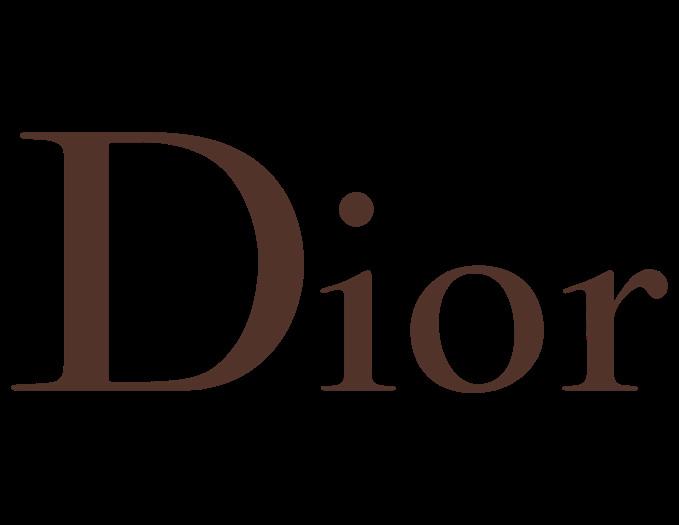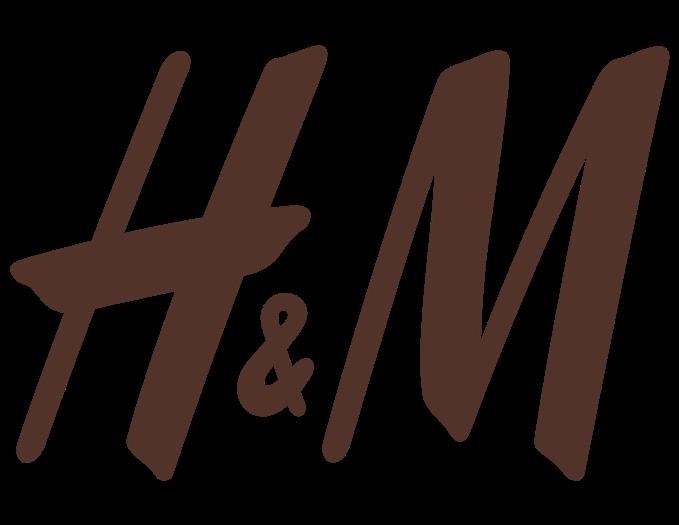
19 minute read
Brand Analysis
from Too Hot for Knitwear: Climate Crisis, Biodiversity and Fashion Brands Using Wool and Synthetics
Too Hot for Knitwear: Climate Crisis, Biodiversity and Fashion Brands Using Wool and Synthetics
A report by the Center for Biological Diversity and Collective Fashion Justice’s CIRCUMFAUNA Initiative
Advertisement
Adidas Analysis
Background
Adidas is a high street brand focused on sportswear. While the brand is best known for sneakers, it has a large and popular collection of garments too.

Knit/wool search results: 10 items
Percent of items containing wool: 80%
Percent of items containing 100% wool: 0%
Average percent of wool in blended products: 47%
Percent of knit items containing 100% synthetic fibers: 10%
Percent of wool items blended with synthetics: 100%
Percent of items using reduced-impact fibers: 30%*
Reduced-impact fibers used: recycled nylon, recycled polyester, recycled tricot, unspecified recycled content
*Based on information provided by the company on the pervasiveness of recycled polyester in its products, this number may be higher than what was indicated on the item listings.
Material sustainability claims for analyzed fibers
Adidas has pledged to use only recycled polyester whenever possible by 2024 and that 9 out of 10 items will contain sustainable materials by 2025. It also highlights product development efforts to replace fossil fuel-based materials with alternatives derived from sustainable sources including mushrooms, cellulose, food waste and plant waste. Its sustainability webpage does not provide information on wool sourcing or treatment.39
Adidas was one of only two brands that responded to inquiries with substantive information. Company representatives noted that more than 90% of the polyester used in its products is recycled. Although product listings do not provide information on dyes, Adidas does not allow harmful azo dyes in products and uses water-based and non-solvent dyes wherever possible. The company does not test its few wool products for biodegradability, instead prioritizing circularity. They wrote, “In our view, biodegradability is not a sustainable end-of-life solution for clothing, instead, we aim for durability and recyclability.”40
The verdict
Adidas demonstrates a commitment to durability and recyclability, but it should strive to accelerate its shift beyond virgin synthetics toward similar high-performance, lower-impact alternatives. Adidas is actively working to address the issue of microfiber pollution in fashion as part of the Microfibre Consortium,41 which shows its understanding of the limitations of recycled synthetics, and the need to improve in this area. The brand’s use of recycled materials must become more considerate of product end-of-life impacts, something the brand has improved within its “Made to be Remade” collection.42
Since the brand’s use of wool is limited, this should make a transition beyond these climate- and biodiversity-harmful materials less challenging to complete in a short-term period.
While the brand prioritizes durability over biodegradability, the two do not have to be mutually exclusive. Processes and dyes that do not impact biodegradation often also do not impact durability.
Too Hot for Knitwear: Climate Crisis, Biodiversity and Fashion Brands Using Wool and Synthetics
A report by the Center for Biological Diversity and Collective Fashion Justice’s CIRCUMFAUNA Initiative
Burberry Analysis
Background
Burberry is a longstanding British luxury fashion house producing ready-to-wear garments. It’s particularly well known for its coats, leather accessories and footwear.

Knit/wool search results: 143 items
Percent of items containing wool: 90%
Percent of items containing 100% wool: 38%
Average percent of wool in blended products: 68%
Percent of knit items containing 100% synthetic fibers: 0%
Percent of wool items blended with synthetics: 48%
Percent of items using reduced-impact fibers: 5%
Reduced-impact fibers used: linen
Material sustainability claims for analyzed fibers
Burberry is investing in “regenerative wool” production, though most of its wool products are not stated as such. The brand claims to improve soil carbon capture and biodiversity on farms.43 With a commitment to reduce its overall emissions contribution, the brand is working to improve its material sourcing, including 100% certification of key raw materials such as certified recycled nylon and polyester and Canopy green rated viscose.44 Burberry did not respond to inquiries for further information on materials sustainability commitments or its wool sourcing, processing, or dyes.
The verdict
While any agricultural management practice improvements are valuable, Burberry’s efforts toward “regenerative wool” fail to acknowledge the significant contribution of methane from ruminant animals to the climate crisis, as well as the inherent land inefficiency of wool and its harms to biodiversity. Burberry should prioritize investment into more environmentally beneficial, fossil fuel-free alternatives to wool. Its use of recycled synthetics is an improvement, but end-of-life impacts for all products must be further considered by the brand, as they have begun to be for their trench collection, which offers repair services and extended care information. The brand must improve its capacity to supply information on its dyeing and treatment of fibers, and how this impacts biodegradation.
Too Hot for Knitwear: Climate Crisis, Biodiversity and Fashion Brands Using Wool and Synthetics
A report by the Center for Biological Diversity and Collective Fashion Justice’s CIRCUMFAUNA Initiative
Coach Analysis
Background
Coach is an American luxury fashion house best known for its leather goods. The brand also produces ready-to-wear garments. It is owned by Tapestry.

Knit/wool search results: 23 items
Percent of items containing wool: 96%
Percent of items containing 100% wool: 50%
Average percent of wool in blended products: 79%
Percent of knit items containing 100% synthetic fibers: 0%
Percent of wool items blended with synthetics: 27%
Percent of items using reduced-impact fibers: 0%
Reduced-impact fibers used: N/A
Material sustainability claims for analyzed fibers
Due to its limited use of wool compared to leather and other materials, no wool-related claims are made in Tapestry’s 2022 Corporate Responsibility Report,45 and no information on environmental impacts at the farm-level or during processing is provided. While the brand uses recycled synthetics in some of its bags and provides sustainability information for those products, no such information exists for its knitwear collection. Coach did not respond to inquiries for further information on materials sustainability commitments or its wool sourcing, processing, or dyes.
The verdict
While Tapestry has a biodiversity strategy and climate strategy in place, those strategies do not acknowledge the negative impact of wool production.46 With a small portion of wool products, Coach could easily transition beyond the use of this material. This transition should also move beyond fossil fuel derived synthetics toward materials that can help advance its biodiversity and climate goals. The brand should invest in the exploration of lower impact materials for its knit and wool products, as none were found in this analysis.
Too Hot for Knitwear: Climate Crisis, Biodiversity and Fashion Brands Using Wool and Synthetics
A report by the Center for Biological Diversity and Collective Fashion Justice’s CIRCUMFAUNA Initiative
Dior Analysis
Background
Dior is a LVMH owned luxury fashion brand from France. The brand offers leather accessories and shoes, cosmetics, and ready-to-wear garments.

Knit/wool search results: 87 items
Percent of items containing wool: 100%
Percent of items containing 100% wool: 24%
Average percent of wool in blended products: 75%
Percent of knit items containing 100% synthetic fibers: 0%
Percent of wool items blended with synthetics: 23%
Percent of items using reduced-impact fibers: 0%
Reduced-impact fibers used: N/A
Material sustainability claims for analyzed fibers
Dior’s website includes vague claims about how wool contributes to “eco-design” and “the protection of natural resources.”47 No information to support this claim is provided. No other information is provided about wool or synthetic material sourcing on its website. Dior did not respond to inquiries for further information on materials sustainability commitments or its wool sourcing, processing, or dyes.
The verdict
Dior claims it helps to protect natural resources, but its use of wool exacerbates our global climate and biodiversity crises. Dior must provide more information to the public on its sustainability targets and include targets to shift from the use of wool and fossil fuel derived materials toward lower-impact fibers.
Too Hot for Knitwear: Climate Crisis, Biodiversity and Fashion Brands Using Wool and Synthetics
A report by the Center for Biological Diversity and Collective Fashion Justice’s CIRCUMFAUNA Initiative
Gucci Analysis
Background
Gucci is an Italian high-end luxury brand selling popular handbags, accessories, ready-to-wear garments, and shoes.

Knit/wool search results: 99 items
Percent of items containing wool: 92%
Percent of items containing 100% wool: 55%
Average percent of wool in blended products: 58%
Percent of knit items containing 100% synthetic fibers: 0%
Percent of wool items blended with synthetics: 30%
Percent of items using reduced-impact fibers: 8%
Reduced-impact fibers used: linen, unspecified “eco features”
Material sustainability claims for analyzed fibers
Gucci has an “eco features” label that appears on products that are both 100% wool and blended with synthetics. The products with this label state that the brand promotes “the use of alternative materials for lower environmental impact such as recycled, regenerated, organic or bio-based materials.” However, the product listings didn’t specify which fibers, processes, or percentage of materials the statement applies to. Gucci also funds regenerative projects for wool, and although the company says it will use third-party verification to measure soil carbon there is no clear description of the standards or metrics for how it will achieve the other core tenets of regenerative agriculture including biodiversity and ecosystem health.48,49
Gucci’s parent company, Kering, acknowledges the wool industry’s significant contribution to land and ecosystem degradation, as well as threats to native wildlife, in its “standards and guidance for sustainable production.” Despite this information, Kering’s standards focus on attempting to reduce the impact of an inherently inefficient material rather than improving alternative material sourcing.50
Gucci did not respond to inquiries for further information on materials sustainability commitments or its wool sourcing, processing, or dyes. Kering is engaged in work to address the issue of microfiber pollution in fashion as part of the Microfibre Consortium,51 which shows its understanding of the limitations of recycled synthetics and the need to improve in this area.
The verdict
While the brand aims for 100% traceability for raw materials, traceability does not equate to sustainability. Gucci needs to reduce its reliance on high-impact materials like wool and improve transparency around its use and definition of lower-impact materials. Gucci’s investment into regenerative animal production projects could be more effectively spent by shifting investment into innovation on sustainable materials that are free from both animal and fossil fuel inputs.
Too Hot for Knitwear: Climate Crisis, Biodiversity and Fashion Brands Using Wool and Synthetics
A report by the Center for Biological Diversity and Collective Fashion Justice’s CIRCUMFAUNA Initiative
H & M Analysis
Background
H&M is one of the largest fast fashion companies in the world, selling an enormous quantity of garments, shoes, accessories and other products.

Knit/wool search results: 96 items
Percent of items containing wool: 92%
Percent of items containing 100% wool: 23%
Average percent of wool in blended products: 20%
Percent of knit items containing 100% synthetic fibers: 7%
Percent of wool items blended with synthetics: 69%
Percent of items using reduced-impact fibers: 38%
Reduced-impact fibers used: recycled polyester, recycled acrylic, recycled polyamide, recycled wool
Material sustainability claims for analyzed fibers
H&M promotes its efforts to offer product recycling; however, it does not address the amount of product created, the large portion of unsustainable materials used, the use-stage impacts of its synthetic knitwear, or the microfiber impacts of blended and processed wools.
The brand uses a small amount of wool, with some of it certified by the Responsible Wool Standard, which includes some environmental requirements. The brand also promotes its engagement to move toward “regenerative wool” and its use of recycled wool but does not specify if it is pre- or post-consumer recycled wool.
52,53 H&M responded to a request for further information by sharing links to its corporate website and sustainability pages, which do not provide additional detail on wool sourcing, processing, or the use of dyes.
The verdict
H&M is actively working to address the issue of microfiber pollution in fashion as part of the Microfibre Consortium.54 Despite promoting climate goals, H&M continues to use a large portion of fossil fuel derived materials. Importantly, H&M’s material sustainability progress must be paired with a degrowth strategy in order for the brand to demonstrate any genuine environmental responsibility. The brand’s promotion of “regenerative” wool for biodiversity protection is misguided at best, and investment would be better spent toward degrowth and material innovation investment.
Too Hot for Knitwear: Climate Crisis, Biodiversity and Fashion Brands Using Wool and Synthetics
A report by the Center for Biological Diversity and Collective Fashion Justice’s CIRCUMFAUNA Initiative
Hermès Analysis
Background
Hermès is a leading French luxury fashion house dating back to 1837. Known best for its exotic skin and leather accessories, the brand also offers ready-to-wear garments.

Knit/wool search results: 37 items
Percent of items containing wool: 68%
Percent of items containing 100% wool: 52%
Average percent of wool in blended products: 71%
Percent of knit items containing 100% synthetic fibers: 3%
Percent of wool items blended with synthetics: 16%
Percent of items using reduced-impact fibers: 0%
Reduced-impact fibers used: N/A
Material sustainability claims for analyzed fibers
Hermès claims it’s reduced greenhouse gas emissions by choosing “sustainable materials.”55 It has also adopted a target to source, when possible, from suppliers certified through the Responsible Wool Standard,56 which has some limited environmental standards attached to it. Hermès did not respond to inquiries for further information on materials sustainability commitments or its wool sourcing, processing, or dyes.
The verdict
Hermès adopts the wool industry rhetoric that its raw materials are a “natural, renewable source” and that their use of animal-based materials avoids the use of synthetics “based on petroleum chemistry.” Among the analyzed knitwear, the only non-animal based fiber used was cotton, which was found in just 8% of items. Twice as many items were blended with synthetics. Although the company mentions the possibility for environmental harm in wool production, it fails to recognize that the industry is inherently harmful to the land, climate and biodiversity. Aligned with its biodiversity goals,57 the company should conduct a dedicated biodiversity study and site-level assessments to its wool supply chain. Hermès must use its preference for natural fibers to shift toward lower-impact, innovatively farmed plant-based fibers.
Just as the brand has invested in a mycelium alternative to cow skin leather, investment in material innovation to support a transition beyond wool and synthetic fibers would benefit the company’s sustainability targets.
Too Hot for Knitwear: Climate Crisis, Biodiversity and Fashion Brands Using Wool and Synthetics
A report by the Center for Biological Diversity and Collective Fashion Justice’s CIRCUMFAUNA Initiative
Louis Vuitton Analysis
Background
Owned by LVMH, Louis Vuitton is another historically significant French fashion house known for leather goods, with a popular ready-to-wear collection of garments.

Knit/wool search results: 41 items
Percent of items containing wool: 76%
Percent of items containing 100% wool: 19%
Average percent of wool in blended products: 54%
Percent of knit items containing 100% synthetic fibers: 0%
Percent of wool items blended with synthetics: 68%
Percent of items using reduced-impact fibers: 0%
Reduced-impact fibers used: N/A
Material sustainability claims for analyzed fibers
Louis Vuitton acknowledges that not all natural materials are renewable, and says it is committed to sources “that have a regenerative impact on biodiversity.” The company specifically names climate, deforestation, hazardous chemicals, air and water pollution, and animal welfare among its supply chain concerns. According to its website, 28% of polyester in its collections is certified recycled.58
In 2020 Louis Vuitton used Responsible Wool Standard certified fibers, which have some environmental standards, for the first time in one of its collections and has used it since in other items. Its website states that, in 2021, nearly 50% of its wool came from supply chains with “responsible practices,” but those practices were not further defined.59
LVMH did not respond to inquiries for further information on materials sustainability commitments or its wool sourcing, processing, or dyes.
The verdict
Louis Vuitton says that most of its raw materials “come from nature,” yet more than half of its wool knitwear was blended with synthetic fibers. Under its responsible sourcing information, the company says that it made a gown using Tencel for the 2020 Oscars Red Carpet Green Dress challenge.60 Louis Vuitton should expand its use of reduced-impact fibers beyond the red carpet to its permanent collections in place of materials like wool that undermine its sustainability goals.
Too Hot for Knitwear: Climate Crisis, Biodiversity and Fashion Brands Using Wool and Synthetics
A report by the Center for Biological Diversity and Collective Fashion Justice’s CIRCUMFAUNA Initiative
Nike Analysis
Background
Nike is a multinational corporation that produces sportswear. Best known for sneakers, the brand has a large collection of popular garments, too.

Knit/wool search results: 15 items
Percent of items containing wool: 67%
Percent of items containing 100% wool: 0%
Average percent of wool in blended products: 34%
Percent of knit items containing 100% synthetic fibers: 7%
Percent of wool items blended with synthetics: 90%
Percent of items using reduced-impact fibers: 27%
Reduced-impact fibers used: recycled polyester, organic cotton
Material sustainability claims for analyzed fibers
Nike plans to increase its focus on “environmentally preferred materials,” since 70% of its product carbon footprint comes from materials. For apparel, this is defined as shifting the content of its two primary materials — polyester and cotton — to recycled polyester, organic cotton and recycled cotton, particularly on “key high-volume fabrics and products.” Nike works to create closed-loop circular systems that include recycling factory waste and end-of-life items into new products. In 2021, the company claimed it was ahead of its plan to integrate more recycled polyester into products.61
Nike has several commitments related to reducing use of hazardous chemicals, but chemical and dye use specific to wool was not available.
No information on wool was provided in the company’s impact report or on its website, and the company did not respond to inquiries for more information on materials sustainability or wool sourcing, processing, or dyes.
The verdict
Nike has a strong commitment to circularity but needs to move beyond solely relying on recycled synthetics which shed microfibers when washed and have limitations on their recyclability. Nike is committed to addressing the issue of microfiber pollution in fashion through its involvement in the Microfibre Consortium.62
The company uses relatively little wool and since all the analyzed wool products were blended, Nike should set ambitious targets to phase out wool in favor of lower-impact materials. Nike acknowledges that shifting to recycled polyester presents minimal challenges since it’s so similar to virgin polyester in quality, performance and aesthetic, but in order to meet its environmental goals, the company will have to rise to the challenge of innovation to bring truly sustainable materials to its collection.
Too Hot for Knitwear: Climate Crisis, Biodiversity and Fashion Brands Using Wool and Synthetics
A report by the Center for Biological Diversity and Collective Fashion Justice’s CIRCUMFAUNA Initiative
The North Face Analysis

Background
The North Face is an outdoor clothing company owned by the VF Corporation that offers a range of jackets and other apparel. While not a luxury brand, it is considered “aspirational” due to its price point.
Knit/wool search results: 56 items
Percent of items containing wool: 81%
Percent of items containing 100% wool: 0%
Average percent of wool in blended products: 53%
Percent of knit items containing 100% synthetic fibers: 20%
Percent of wool items blended with synthetics: 100%
Percent of items using reduced-impact fibers: 73%
Reduced-impact fibers used: recycled polyester, recycled nylon, TENCEL lyocell
Material sustainability claims for analyzed fibers
The North Face has set an “ambitious goal” of ensuring “100% responsibly sourced apparel fabrics by 2025,” with footwear and equipment on track to meet the same goal by 2030.63 Its parent company,
VF Corporation, notes that material extraction, processing and production accounts for about 70% of its overall global CO2 emissions. VF Corporation highlights “regenerative” animal production as a part of their sustainable materials vision, as well as renewable and recycled materials. VF uses Responsible Wool Standard certified wool as well as “Smartwool,” which they claim to be “the world’s first regenerative wool.”64
The North Face names its top materials as polyester, cotton and nylon, and doesn’t mention wool on its materials sustainability webpage. It states that the polyester and nylon in its Fall 2022 collection was at least 85% and 75% recycled, respectively. The brand website also says that it has begun experimenting with bio-based materials as part of its goal to use fewer virgin synthetics.65 The North Face and VF did not respond to inquiries for further information on materials sustainability commitments or its wool sourcing, processing, or dyes.
The verdict
While The North Face has made the positive move of shifting away from some of the most harmful virgin materials for its apparel sourcing, the company must look beyond solutions that sound promising but do little to meaningfully address the industry’s impact on climate, land, water and wildlife.
Every wool item analyzed was blended with synthetics; only one item was found that used Tencel lyocell, and the rest relied on recycled synthetics for reduced-impact fibers. Blended wool fibers are not effectively biodegradable and recycled synthetics continue to shed microfibers, undermining the sustainability of these products. The North Face seems to have moved away from its collection of “climate beneficial wool,” which Fast Company referred to as “wool that fights climate change” — a dubious claim given the serious climate and land costs of wool production. However, VF continues to promote wool as a “regenerative” solution to the climate crisis, despite the reality of commercial grazing systems as counter to climate and biodiversity protection.66,67
The North Face is another brand working to address the issue of microfiber pollution in fashion as part of the Microfibre Consortium.68 The company must prioritize its exploration of sustainable bio-based materials and invest in plantbased systems, which are more land efficient and less climate intensive than wool and synthetics, as well as positively benefiting biodiversity.
Too Hot for Knitwear: Climate Crisis, Biodiversity and Fashion Brands Using Wool and Synthetics
A report by the Center for Biological Diversity and Collective Fashion Justice’s CIRCUMFAUNA Initiative
Puma Analysis
Background
Puma is a multinational corporation producing athletic and casual footwear, as well as apparel and accessories.

Knit/wool search results: 6 items
Percent of items containing wool: 50%
Percent of items containing 100% wool: 0%
Average percent of wool in blended products: 27%
Percent of knit items containing 100% synthetic fibers: 20%
Percent of wool items blended with synthetics: 100%
Percent of items using reduced-impact fibers: 0%
Reduced-impact fibers used: N/A
Material sustainability claims for analyzed fibers
Puma states that material production accounts for more than 50% of the company’s environmental impact. It also acknowledges the harm caused by materials production to biodiversity and has set targets to reduce pollution and deforestation in its supply chain.69 The company uses very little wool, and as such its 2021 sustainability report notes that it has not yet implemented Responsible Wool Standards in its materials sourcing but has a target of 100% certified wool by 2025. It also has a target to increase its use of recycled polyester to 75% in apparel and accessories.70 Puma did not respond to inquiries for further information on materials sustainability commitments or its wool sourcing, processing, or dyes.
The verdict
Given how little wool Puma uses — both by its own admission and our analysis — the company would be better served to phase out wool and replace it with lower-impact, next-gen materials rather than relying on the Responsible Wool Standard, which cannot eliminate the negative impacts of virgin wool sourcing.
Puma is also working to address microfiber pollution as part of the Microfibre Consortium.71 Similar to other athletic-wear brands, Puma needs to recognize the limitations of recycled synthetics as a long-term solution to the environmental harms of the fashion industry, and instead invest in materials innovation and prioritize shifting to materials that cause minimal harm during use and at the end of life.
Too Hot for Knitwear: Climate Crisis, Biodiversity and Fashion Brands Using Wool and Synthetics
A report by the Center for Biological Diversity and Collective Fashion Justice’s CIRCUMFAUNA Initiative
Uniqlo Analysis
Background
Uniqlo is a Japanese casual wear company, under the parent company of Fast Retailing. It is estimated to operate over 1,500 stores worldwide.

Knit/wool search results: 37 items
Percent of items containing wool: 89%
Percent of items containing 100% wool: 67%
Average percent of wool in blended products: 46%
Percent of knit items containing 100% synthetic fibers: 5%
Percent of wool items blended with synthetics: 30%
Percent of items using reduced-impact fibers: 0%
Reduced-impact fibers used: N/A
Material sustainability claims for analyzed fibers
Uniqlo’s sustainability report does not mention the use of wool once,72 despite its significant environmental impacts. Uniqlo promotes its use of post-consumer recycled polyester, which is derived from plastic bottles, as well as its participation in the “Microfibre Consortium,” which aims to address microplastic pollution in the fashion industry.
Fast Retailing, the parent company of Uniqlo, was one of only two companies that responded to inquiries with substantive information. The company noted that increasing the use of recycled synthetics is a priority in its target to use 50% recycled materials by 2030,73 and as of 2022, 16% of its polyester is recycled.74 The company also said that recycled and organic cotton was used in its fall/winter collections, however, these materials were not used in the knitwear products included in this analysis.
Fast Retailing’s responsible procurement webpage has some animal welfare standards for wool but does not mention the material’s environmental impact.75 The parent company also shares its chemicals policy, which applies to wool products and includes initiatives to reduce the use of hazardous chemicals, but does not address chemicals and dyes that might affect the biodegradability of garments.76
The verdict
With no reduced-impact fibers used in Uniqlo’s assessed products, the most beneficial step the brand could make would be to commit to increasing the use of lower-impact fibers such as recycled cotton, Tencel, hemp and others, while phasing out high-impact fibers such as virgin synthetics and wool. Uniqlo is a part of the Microfibre Consortium.77
Too Hot for Knitwear: Climate Crisis, Biodiversity and Fashion Brands Using Wool and Synthetics
A report by the Center for Biological Diversity and Collective Fashion Justice’s CIRCUMFAUNA Initiative
Zara Analysis
Background
Zara is owned by Inditex, considered the largest fast fashion company in the world. It sells a wide range of apparel, shoes and other products.

Knit/wool search results: 135 items
Percent of items containing wool: 100%
Percent of items containing 100% wool: 12%
Average percent of wool in blended products: 25%
Percent of knit items containing 100% synthetic fibers: 0%
Percent of wool items blended with synthetics: 86%
Percent of items using reduced-impact fibers: 33%
Reduced-impact fibers used: recycled polyester, recycled acrylic, recycled polyamide, recycled wool, linen, Ecovero
Material sustainability claims for analyzed fibers
Inditex announced in 2019 that 100% of Zara collections would be made with “sustainable fabrics” by 2025.78 The company’s sustainability goals are broken down on its website and feature a commitment toward 100% recycled polyester by 2025, along with some commitments for other fibers.79 Between 15% and 50% of Zara’s collections are made with recycled wool and cotton from pre-consumer sources.80
Composition information on products made from wool-synthetic blends state that the brand works to monitor programs that ensure compliance with its environmental health standards. However, the statement is vague and no further information is provided. The brand’s sustainability policy also does not refer to material sourcing requirements.81
Zara did not respond to inquiries for further information on materials sustainability commitments or its wool sourcing, processing, or dyes.
The verdict
As with other fast fashion brands, Zara must incorporate degrowth strategies into its business to ensure meaningful action for the environment. The high use of synthetics in fiber blends is concerning as blended fibers are difficult to recycle and have consequences related to both user-stage and end-of-life impacts. Zara should ensure its work to use recycled fibers is not in isolation from broader progress to address these impacts. Zara’s use of virgin wool is not transparent, with no information about raw material sourcing, scouring or dyeing available, even by request. Zara should continue to invest in reduced-impact fibers and do so by prioritizing plant-based and biodegradable fibers over destructive wool and synthetics.

